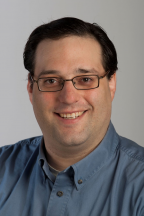Elliot Biro, PEng, IWE

Biography
Elliot Biro is an Associate Professor in the Department of Mechanical and Mechantronics Engineering. He has an extensive background in joining techniques used in the automotive and steel industries from his work with ArcelorMittal Global Research where he was responsible for many projects that applied metallurgical fundamentals to solve industrial problems. Dr. Biro’s experience includes process optimization for a variety of welding techniques (gas metal arc welding, spot welding, laser welding, high frequency induction welding, flash butt welding, and seam welding), understanding property changes and cracking during welding (heat affected zone softening and LME cracking), and development of simulation techniques to understand the metallurgical changes during welding and other steel manufacturing processes.
Dr. Biro’s primary research interests are: metallurgical changes during welding, development of defects during welding, increasing process robustness to improve manufacturability, physical simulation of the welding process, welding of advanced high strength steels (AHSS), dissimilar material joining and weld evaluation. He currently sits on a variety of industry committees with the AWS and the CCIIW. From his work with industry Dr. Biro was responsible for $25M in savings to manufacturing costs from the results his projects. He has been awarded over $4.2M in research and infrastructure funding and currently has over 110 journal papers and 80 conference papers.
Research Interests
Metallurgical transformations during welding, Post-weld properties, Improving weld process robustness (increasing manufacturability), Effect of microstructure and mechanical property hetrogenity on weld performance, Physical simulation of the welding process, Weld defect formation, Welding advanced high strength steel (AHSS), Dissimilar material welding
Education
2014, Doctorate Material Science and Engineering, McMaster University, Canada
2001, Master of Applied Science Mechanical Engineering, University of Waterloo, Canada
2000, Bachelor of Applied Science Mechanical Engineering, University of Waterloo, Canada
Awards
2022 Engineering Research Excellence Awards (Assistant Prof.), Faculty of Engineering, University of Waterloo
Teaching*
- BME 282 - Materials Science for Biomedical Engineers
- Taught in 2023, 2025
- ME 235 - Materials Science and Engineering
- Taught in 2021
- ME 535 - Welding Metallurgy
- Taught in 2021, 2022, 2023, 2024, 2026
- ME 634 - Practical Experimental Statistics and Data Visualization
- Taught in 2025
- ME 738 - Special Topics in Materials
- Taught in 2021, 2022, 2023
* Only courses taught in the past 5 years are displayed.
Selected/Recent Publications
Schuster L., Olfert V., Sherepenko O., Fehrenbach C., Song S., Hein D., Meschut G., Biro E., and Munstermann S., Influences of Weld Nugget Shape and Material Gradient on the Shear Strength of Resistance Spot-Welded Joints, Steel Research International, Volume 95, Germany, 2024.
Shojaee M., Tolton C., Midawi A., Zhang T., Ghassemi-Armaki H., Worswick M., Butcher C., and Biro E., An experimental methodology to characterize load-based fracture models of third generation advanced high strength steel resistan, International Journal of Advanced Manufacturing Technology, Volume 127, 943-965, Canada, 2024.
Ramachandran D.C., Salandari-Rabori A., Midawi A.R.H., Macwan A., and Biro E., Effect of Paint Baking Treatment on Mechanical Properties of Resistance Spot Welded Q&P 980 Steel, ISIJ International, Volume 64, 1178-1184, Canada, 2024.
Song S., Shojaee M., Midawi A.R.H., Sherepenko O., Ghassemi-Armaki H., and Biro E., Influence of expulsion and heat extraction resulting from changes to electrode force on liquid metal embrittlement during resist, Journal of Materials Research and Technology, Volume 23, 1458-1470, Canada, 2023.
Bakhtiari R., Nikukar H., Divandari M., and Biro E., Friction stir processing/transient liquid phase bonding (FSP/TLP) of AISI304 stainless steel, Welding in the World, Volume 67, 1719-1731, Iran, 2023.
Midawi A.R.H., Patel M., Shojaee M., Pearson K., Sherepenko O., Ghassemi-Armaki H., and Biro E., Effect of Liquid Metal Embrittlement Indent Cracks on Zinc Coated 3rd Generation AHSS Mechanical Performance, Metals, Volume 13, Canada, 2023.
Patel M., Shojaee M., Sherepenko O., Midawi A.R.H., Ghassemi-Armaki H., and Biro E., Mitigating the influence of industrially relevant disturbances on LME severity of dissimilar resistance spot welded advanced hig, Journal of Materials Research and Technology, Volume 26, 22-31, Canada, 2023.
Ramachandran D.C., Figueredo B., Sherepenko O., Jin W., Park Y.-D., and Biro E., A study on improving the mechanical performance by controlling the halo ring in the Q&P 980 steel resistance spot welds, Journal of Manufacturing Processes, Volume 75, 320-330, Canada, 2022.
Shehryar Khan M., Enrique P., Ghatei-Kalashami A., Lopes J.G., Schell N., Oliveira J.P., Biro E., and Norman Zhou Y., The influence of in-situ alloying of electro-spark deposited coatings on the multiscale morphological and mechanical properties , Materials Science and Engineering: A, Volume 127, Canada, 2022.
Khan M.S., Ali S., Westerbaan D., Duley W., Biro E., and Zhou Y.N., The effect of laser impingement angle on the optimization of melt pool geometry to improve process stability during high-speed l, Journal of Manufacturing Processes, Volume 78, 242-253, Canada, 2022.
Graduate studies
- Currently considering applications from graduate students. A completed online application is required for admission; start the application process now.
- Has Sole-Supervisory Privilege Status (SSPS) status